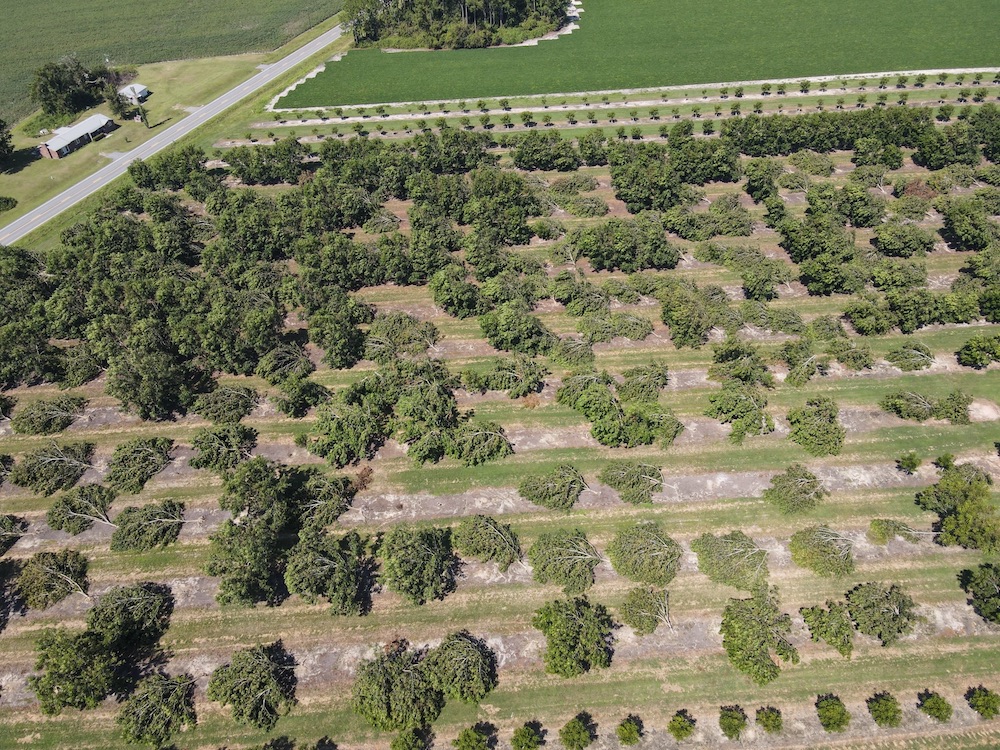Three separate waves of severe storms ripped through Georgia last month. Warmer-than-normal temperatures may have contributed to the development of these severe episodes. But most of the state, except far-northern counties, remains drier than normal.
Severe weather was reported on eleven days in April, with the majority happening April 4, 15 and 27, as warm and moist flow from the south ahead of strong cold fronts caused multiple large thunderstorms.
Devastating tornadoes
On April 4, several small to moderate tornadoes and widespread strong winds caused damage throughout Georgia. Seven people were killed and 9 injured during this series of storms. More than 270,000 people lost power and more than 400 homes and businesses were damaged or destroyed.
Three small tornadoes were observed April 15 with the overnight passage of another cold front in central Georgia; however, damage from this front was much more widespread in Alabama and North Carolina.
The biggest outbreak of severe weather came April 27-28 during one of the worst tornado outbreaks in the Southeast since the Super Outbreak of April 1974. The National Weather Service determined Georgia experienced 15 tornadoes during this time, most strong and long-track tornadoes. A detailed description of the tornadoes in north and central Georgia can be found at http://www.srh.noaa.gov/ffc/?n=20110427_svrstorms. The state insurance commissioner estimated that insured losses in Georgia alone were at least $75 million and were expected to rise due to this storm.
Fifteen people were killed and 115 were injured in the onslaught of storms that occurred across the state. The most devastating tornado was a rare EF4 that hit Ringgold in Catoosa County April 27. Eight people died and as many as 100 buildings were destroyed. Georgia Power reported that 78,000 people were without power the morning after these storms passed.
Above normal temperatures
Temperatures across the state were above normal for the third straight month. In Atlanta, the monthly average temperature was 65.3 degrees F (3.7 degrees above normal), in Athens 64.1 degrees (3.2 degrees above normal), Columbus 68.9 degrees (4.7 degrees above normal), Macon 66.7 degrees (4 degrees above normal), Savannah 69.6 degrees (4.3 degrees above normal), Brunswick 70.3 degrees (3.9 degrees above normal), Alma 69.4 degrees (2.7 degrees above normal), Valdosta 70.9 degrees (5.7 degrees above normal) and Augusta 67.1 degrees (4.7 degrees above normal).
This was the ninth warmest April on record for Atlanta, the fifth warmest for Columbus and Augusta, and the third warmest for Savannah since records began. Several daily record highs were set in many locations, including Savannah, Augusta and Brunswick. Several cities tied daily record highs.
Little rainfall recorded
Despite the severe weather, rainfall was quite low across most of Georgia, with the exception of the northern quarter of the state. The driest areas were the south-central and southwest regions. Most of the rainfall came from thunderstorm activity, which is more variable, or spotty, than widespread winter frontal rains.
The highest monthly total precipitation from National Weather Service reporting stations was 5.40 inches in Valdosta (1.57 inches above normal). The lowest was in Macon at 1.30 inches (1.84 inches below normal). Atlanta received 3.06 inches (0.56 inch below normal), Athens 2.28 inches (1.07 inches above normal), Alma 1.74 inches (1.42 inches below normal), Columbus 1.67 inches (2.17 inches below normal), Brunswick 1.98 inches (0.82 inch below normal), Savannah 1.35 inches (1.97 inches above normal) and Augusta 1.93 inches (1.01 inches above normal).
This was the tenth driest April in both Macon and Savannah since records began at the airports.
Augusta reported a new daily rainfall record of 1.08 inches April 28, breaking the old record of 1.07 inches set that date in 1922.
The highest single-day rainfall from Community Collaborative Rain, Hail and Snow Network stations was 4.67 inches northeast of Dillard in Rabun County April 16. An observer near Ringgold reported 4.14 inches on the same day. The highest monthly total precipitation of 9.58 inches was measured near Emma in Dawson County, with 9.29 inches near Dillard in Rabun County and two monthly reports of over 8 inches near Ringgold.








.jpg)